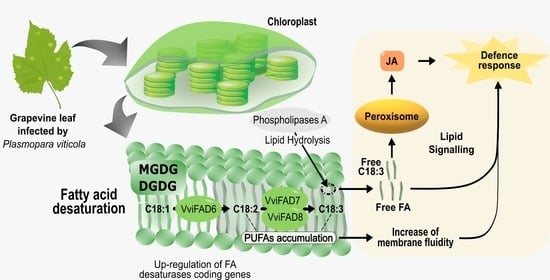Fatty Acid Desaturases: Uncovering Their Involvement in Grapevine Defence against Downy Mildew
Abstract
Share and Cite
Laureano, G.; Cavaco, A.R.; Matos, A.R.; Figueiredo, A. Fatty Acid Desaturases: Uncovering Their Involvement in Grapevine Defence against Downy Mildew. Int. J. Mol. Sci. 2021, 22, 5473. https://doi.org/10.3390/ijms22115473
Laureano G, Cavaco AR, Matos AR, Figueiredo A. Fatty Acid Desaturases: Uncovering Their Involvement in Grapevine Defence against Downy Mildew. International Journal of Molecular Sciences. 2021; 22(11):5473. https://doi.org/10.3390/ijms22115473
Chicago/Turabian StyleLaureano, Gonçalo, Ana Rita Cavaco, Ana Rita Matos, and Andreia Figueiredo. 2021. "Fatty Acid Desaturases: Uncovering Their Involvement in Grapevine Defence against Downy Mildew" International Journal of Molecular Sciences 22, no. 11: 5473. https://doi.org/10.3390/ijms22115473
APA StyleLaureano, G., Cavaco, A. R., Matos, A. R., & Figueiredo, A. (2021). Fatty Acid Desaturases: Uncovering Their Involvement in Grapevine Defence against Downy Mildew. International Journal of Molecular Sciences, 22(11), 5473. https://doi.org/10.3390/ijms22115473







